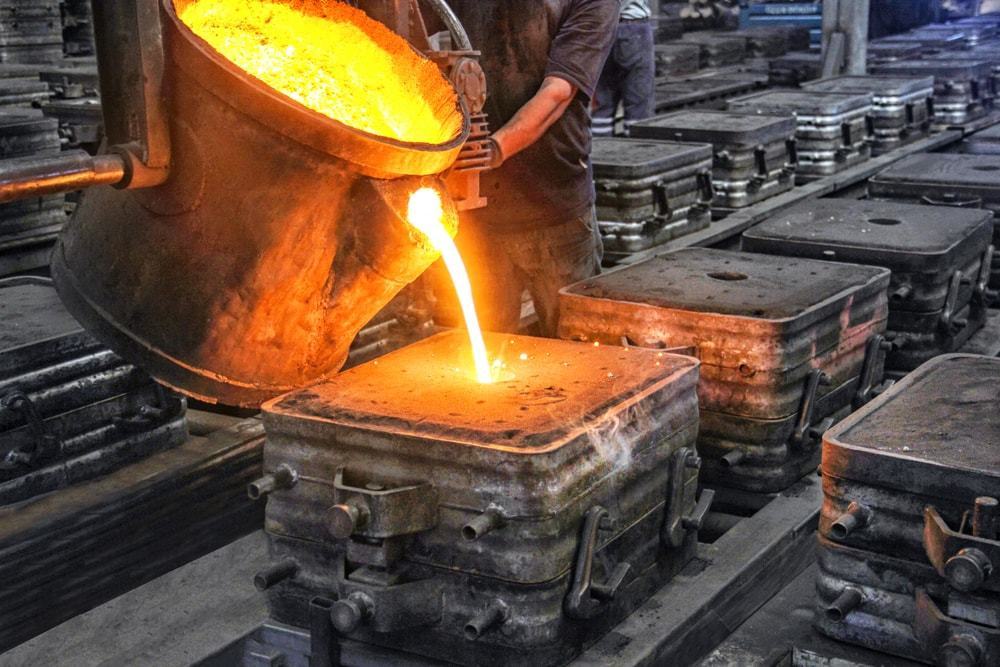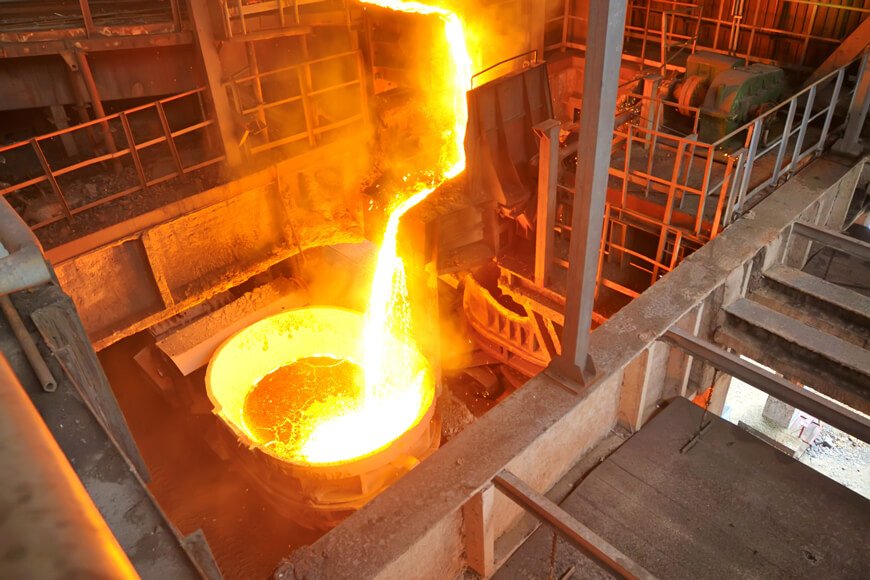The future of Metal Casting every engineer should know about
Discover the Ingenious Strategies Utilized in a Metal Foundry for Superior Casting Outcomes
In today's affordable manufacturing landscape, metal foundries are significantly embracing innovative methods to enhance spreading results - Aluminum Casting. Advanced computer system simulations enable specific modeling of molten metal actions, while 3D printing allows rapid production of intricate molds. In addition, environment-friendly products and automation improve procedures. These growths guarantee considerable improvements in efficiency and quality assurance. The impact of these innovations on sustainability and production methods remains to be totally explored.
Advanced Computer System Simulations in Metal Casting
Advanced computer system simulations have transformed the metal casting process by improving accuracy and effectiveness. These advanced devices enable designers to produce virtual models of actors components, allowing them to assess and predict the actions of liquified metal throughout the spreading phase. By mimicing numerous criteria such as temperature level, circulation rate, and air conditioning rates, makers can determine possible problems before physical production begins.
This aggressive technique decreases waste and lessens costly mistakes, ultimately causing improved item top quality. Additionally, simulations promote the optimization of mold and mildew styles, ensuring that they satisfy the certain requirements of each task. The combination of computational fluid characteristics (CFD) and limited element evaluation (FEA) additional adds to the accuracy of these simulations, giving insights that were previously unattainable. Consequently, advanced computer system simulations have come to be a vital element of modern metal foundries, considerably advancing the market's capacities.
3D Printing for Mold And Mildews and Patterns
3D printing has arised as a groundbreaking strategy for producing mold and mildews and patterns in the metal foundry industry. This innovation allows the rapid manufacturing of intricate geometries that standard manufacturing techniques struggle to accomplish. By utilizing additive production, foundries can create elaborate layouts with reduced preparations and material waste. The ability to produce molds as needed allows for greater flexibility in style models, helping with faster prototyping and adjustments.
Moreover, 3D printing can make use of a range of materials, including metals and plastics, customized to specific casting requirements. This adaptability enhances the precision of molds, leading to premium casting end results with enhanced surface coatings. Additionally, the reduction in the variety of components called for streamlines setting up procedures, further maximizing production efficiency. As foundries proceed to adopt 3D printing, they are poised to redefine market requirements, paving the way for advancement and improved performance in metal casting procedures.
Eco-Friendly Products and Processes
As the metal foundry sector faces increasing stress to reduce its ecological footprint, the adoption of environmentally friendly materials and processes has become necessary. Factories are now exploring lasting options to standard materials, such as making use of recycled steels and bio-based binders. These materials not only reduce waste but additionally reduced energy intake throughout manufacturing.
In addition, improvements in sand casting strategies have led to making use of synthetic sands that are less unsafe to the environment. Shops are likewise implementing innovative procedures like liquified metal treatment that reduces discharges and enhances the high quality of cast items.
Water-based coatings have actually replaced poisonous solvents, promoting a safer work environment. By integrating these environment-friendly practices, metal foundries can considerably lower their ecological influence while maintaining top quality casting outcomes. This change not only benefits the environment but also straightens with the growing consumer demand for lasting manufacturing services
Automation and Robotics in Foundry Procedures
While the metal foundry industry embraces development, the assimilation of automation and robotics is changing operations substantially. Automated systems improve procedures such as mold and mildew production, metal putting, and casting finishing, significantly boosting efficiency. Robotics help this page with the handling of heavy materials, minimizing the threat of office injuries and making certain more secure environments.

Additionally, making use of automated guided lorries (AGVs) maximizes product transport within facilities, making sure timely distribution of elements to appropriate workstations. By carrying out these technologies, foundries can adapt to changing demands with higher agility, ultimately leading to enhanced earnings and competition on the market. As automation and robotics remain to evolve, they hold the possible to redefine conventional foundry techniques and drive more advancements in casting strategies.
Real-Time Tracking and Quality Assurance Techniques
The innovations in automation and robotics have led the way for extra advanced techniques to quality guarantee in metal foundries. webpage Real-time surveillance systems make use of innovative sensing units and information analytics to track critical parameters throughout the spreading procedure. These systems continually analyze variables such as temperature level, stress, and material structure, making it possible for instant detection of variances from developed standards.
Quality control methods currently include artificial intelligence formulas that examine historic information to predict prospective flaws prior to they happen. This aggressive strategy decreases waste and boosts total manufacturing efficiency. In addition, incorporated feedback loopholes permit fast adjustments, ensuring that each spreading fulfills rigorous top quality requirements.
The application of digital twins-- virtual reproductions of physical properties-- has actually likewise reinvented quality control, enabling engineers to mimic and optimize procedures in real-time. Together, these innovative methods significantly improve the reliability and high quality of castings, setting new market standards in metal foundry procedures.
Often Asked Questions
What Kinds of Metals Are Commonly Cast in Foundries?
Generally cast steels in foundries consist of aluminum, brass, iron, and bronze. Each metal exhibits special homes, making them suitable for different applications, such as auto components, machinery, and imaginative sculptures, boosting their adaptability in production.

How much time Does the Casting Refine Normally Take?
The casting process typically takes a number of hours to days, depending upon factors such as the intricacy of the mold, kind of metal made use of, and air conditioning demands. Each stage affects the total period noticeably.
What Security Actions Are in Location for Foundry Employees?

How Are Flaws in Castings Identified and Addressed?
Issues in spreadings are determined with visual inspections and non-destructive testing methods. As soon as identified, foundry employees address them by fine-tuning processes, adjusting product make-ups, and applying restorative steps to guarantee quality and conformity with requirements.
What Is the Cost Variety for Metal Casting Services?
The expense array for metal spreading solutions normally ranges $1 to $10 per extra pound, depending on aspects such as product kind, intricacy of the style, and manufacturing quantity, affecting overall prices significantly.
In today's affordable production landscape, metal foundries are increasingly taking on cutting-edge techniques to improve spreading results. As the metal foundry sector faces boosting pressure to decrease its ecological footprint, the fostering of green materials and procedures has come to be essential. Factories are now checking out lasting alternatives to typical materials, such as using bio-based binders and recycled metals. By incorporating these environmentally friendly techniques, metal foundries More Info can noticeably decrease their environmental impact while maintaining top notch casting outcomes. The advancements in automation and robotics have led the way for a lot more innovative methods to high quality guarantee in metal foundries.